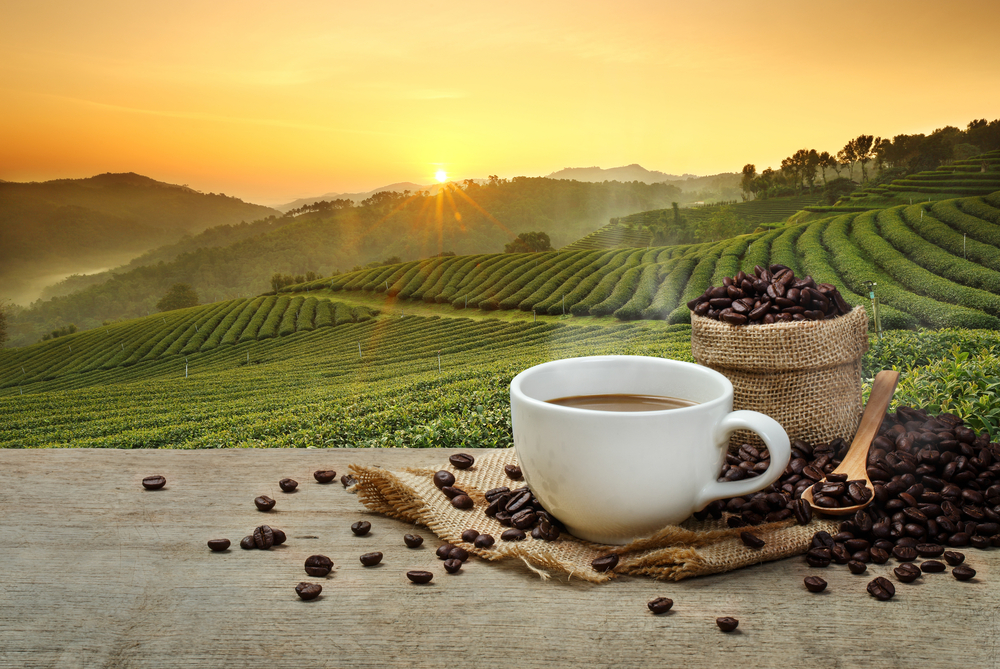Is your coffee vegan and eco-friendly?
Mandy Mazliah discovers what goes into making our coffee and how to keep it vegan.
How do you like your coffee? A soya flat white, drip filter, long black, or perhaps a pumpkin spice caramel latte? Or maybe you prefer to make your own – there’s nothing quite like the smell of freshly ground coffee beans of a morning, is there?
But – is my coffee vegan?
It may sound a silly question. Coffee beans are a plant and, as long as you choose non-dairy milk with your coffee, of course it’s vegan, right? Actually, it’s more complicated than that.
How much do you know about where your coffee comes from, how the farmers that produce it are treated, whether natural habitats – and the animals that live in them – are protected? If you’re anything like me the answer is probably ‘not much’.
When we make the decision to become vegan we have to think beyond just the food we eat. Veganism is a lifestyle choice, it’s about living ethically, treating the world well and caring for the animals – and the people – that share the planet with us.
The coffee bean itself is of course vegan. What we call the bean is actually the seed of the coffee plant. It grows inside a red or purple fruit, often called a cherry. The bean is green when it’s harvested. It’s dried, shipped and then roasted, which gives it the dark brown colour we’re familiar with. And then there are further issues to consider. Have you used a reusable cup? Were the spices and syrups in your coffee vegan? Like I said, it’s complicated.
Co-operative coffee
To find out more I went to meet Georgios Kokkalis, Q Grader at Cafédirect, to find out more about their work in this area. Coffee experts don’t come more expert than Q Graders. After a lot of study they have to score 100% in a rigorous exam. This process is repeated every three years – if they don’t pass then they have to start again.
I discovered that not all coffee beans are equal. I asked Kokkalis how we can identify the good ones. He told me about the Huadquiña Co-operative in Peru. A couple of hours from the world-famous Machu Picchu, this co-operative of just over 300 smallholder farmers produces 534 tonnes of coffee every year. That’s the equivalent of more than 30 million cups of coffee!
The co-operative’s manager, Hebert Quispe Palomino, is passionate about his work. He talks about “cafe con historia, cafe con mañana” – coffee with a history, coffee with a tomorrow.
In many ways, the work continues traditional farming ways. Hebert says: “Co-op members have a spiritual relationship with their land that dates back millennia. Before we do anything to our land we ask permission of the apus (the spirit of the mountains). Our elders taught us that the apus will tell us when there will be a good harvest. In the post-harvest fermentation, we pay particular attention to the lunar cycle, because the coffee ferments best when the moon is full.”
Keep it in the shade
Guy Wilmot, founder of coffee company Bird & Wild, agrees with the importance of continuing traditional practices. “Coffee grows naturally in the shade as part of a forest or jungle ecosystem. Sadly, the majority of coffee plantations across the globe have become “sun grown” since the 1970s, which means that coffee is grown out in the open and fed with vast amounts of water, fertilisers and pesticides as a mono-culture with little other life to speak of, so no trees or bushes and no insects or life for wildlife to feed on. In short, almost no biodiversity to speak of and a short-termist outlook that degrades the soil rapidly. Shade grown coffee is the opposite of all that, so think biodiversity and coffee agriculture balanced with nature that will last for generations to come.”
Matt McDonald, also a Q Grader at Cafédirect, agrees that it’s crucial to grow coffee in a way that supports the ecosystem. “Smallholder farmers grow coffee under shade because they seek to support and help the natural ecosystem, which in turn helps the coffee growers by creating a thriving ecosystem and fertile soils in which to grow their crops. Farmers intercrop as well to provide other income streams. For example, banana trees are often planted among coffee trees to provide shade, but also to provide food or extra income from the sale of bananas.”
So what can you do to make sure your coffee is vegan-friendly?
- Ask your barista about the provenance of their coffee. You’d be surprised how seriously many independent coffee shops take the issue. Warner Newman, co-owner of vegan cafe Blank Brixton and a barista with 17 years experience, can talk at length about the importance of “quality not quantity” when it comes to coffee purchasing. He buys his coffee direct from the supplier and hires a roastery to roast the coffee to his specifications for his cafe. Yes it might cost more, but it’s worth it.
- Use a re-usable cup. It’s a simple and easy way to cut down on waste.
- When you’re buying a packet of coffee in the shops, look out for organic, fair trade and Rainforest Alliance logos. You might not find all three on a packet of coffee, but at least one of
them will mean that care has been taken with the production of your coffee. - Use a cafetiere or re-usable filter rather than a disposable one.
- If you’re using syrups, milk, cream or sugar, check the ingredients!

